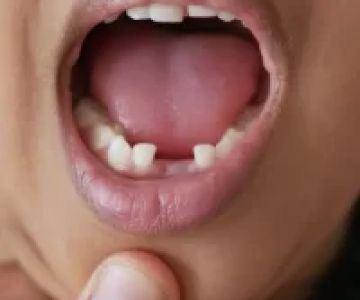Revolutionizing Orthodontics: The Role of 3D Scanning in Modern Dentistry
- Introduction to 3D Scanning Technology in Orthodontics
- The Benefits of 3D Scanning in Orthodontic Treatment
- How Does 3D Scanning Work in Orthodontics?
- Real-Life Applications and Success Stories of 3D Scanning in Orthodontics
- The Future of 3D Scanning in Orthodontics
Introduction to 3D Scanning Technology in Orthodontics
In recent years, 3D scanning has revolutionized many aspects of orthodontics. Traditional methods like physical impressions and X-rays are now being replaced by more precise and efficient digital techniques. 3D scanning in orthodontics has not only improved the accuracy of diagnosis but also enhanced treatment planning and patient outcomes.
Why 3D Scanning is a Game Changer in Dentistry
Orthodontic professionals are now able to create accurate digital models of a patient’s mouth, teeth, and jaw with incredible detail. This digital approach minimizes discomfort for the patient, reduces human error, and accelerates the overall treatment process. From designing braces to planning complex surgeries, 3D scanning plays a crucial role in improving the quality of care.
The Benefits of 3D Scanning in Orthodontic Treatment
The integration of 3D scanning into orthodontics offers several notable advantages over traditional techniques. Here are just a few:
1. Enhanced Accuracy
One of the primary benefits of 3D scanning is its ability to capture highly accurate and detailed digital impressions. Traditional molds can be distorted or uncomfortable for the patient, but 3D scanning eliminates these issues, ensuring more precise diagnostics and treatment planning.
2. Time Efficiency
3D scanning significantly reduces the time needed to complete an orthodontic consultation. Unlike the days of waiting for impressions to set or relying on manual measurements, 3D scans provide instant results. This means orthodontists can begin treatment planning much sooner, ultimately leading to quicker treatment times.
3. Improved Patient Comfort
Traditional orthodontic impressions can be uncomfortable and even cause gag reflex in some patients. 3D scanning eliminates the need for physical molds, offering a much more comfortable and patient-friendly experience. This is especially beneficial for patients with sensitive mouths or those undergoing complex procedures.
4. Better Communication with Patients
3D images can be easily shared with patients, helping them visualize the proposed treatment plan. This transparency improves communication and trust between orthodontists and patients, allowing patients to feel more informed and confident about their treatment options.
How Does 3D Scanning Work in Orthodontics?
3D scanning in orthodontics typically involves a process known as intraoral scanning, where a small handheld scanner is used to capture detailed images of the patient’s teeth and gums. The scanner uses light to capture thousands of data points, which are then processed by specialized software to create a highly detailed digital 3D model.
Step-by-Step Process of 3D Scanning
1. Preparation: The patient’s mouth is cleaned, and the scanner is positioned inside the mouth to capture images of the teeth and gums.
2. Scanning: The orthodontist moves the scanner around the patient's mouth to capture all angles of the teeth and gums. The scan is typically completed in just a few minutes.
3. Data Processing: The scanner sends the data to specialized software, which reconstructs it into a 3D digital model. The model is then available for use in planning the patient’s orthodontic treatment.
What Happens After Scanning?
Once the scan is complete, orthodontists can begin designing customized aligners or braces. The digital model allows for a more precise fit, and the treatment can be planned with greater accuracy, reducing the number of office visits for adjustments.
Real-Life Applications and Success Stories of 3D Scanning in Orthodontics
There are many success stories of orthodontists achieving better results with the help of 3D scanning technology. Take, for example, the case of Emma, a 28-year-old patient who had been hesitant to undergo orthodontic treatment due to the discomfort of traditional molds. After using 3D scanning for her initial consultation, Emma was able to see her treatment plan in 3D, including the projected outcomes. She decided to proceed with clear aligners, and after just a few months, she saw a remarkable improvement in her smile.
Transforming Treatment with Clear Aligners
For orthodontists who use clear aligners, 3D scanning has been a game-changer. Not only can they create better-fitting aligners, but the treatment can also be more precisely monitored through regular scans. This allows for adjustments to be made quickly and efficiently, improving overall patient satisfaction.
The Future of 3D Scanning in Orthodontics
The potential for 3D scanning in orthodontics is immense. As technology continues to evolve, we can expect even more advanced features, such as real-time treatment tracking, improved software for design customization, and even the possibility of scanning through augmented reality. This could make orthodontic care more efficient, more affordable, and accessible to a larger population.
Enhanced Predictability and Treatment Personalization
The future of 3D scanning also lies in its ability to offer highly personalized treatment options. With advancements in AI and machine learning, orthodontists may soon be able to predict treatment outcomes with even greater precision, making for a truly customized approach to care.
Learn More About 3D Scanning in Orthodontics
If you’re interested in discovering more about how 3D scanning can enhance orthodontic treatments or are looking to schedule a consultation, visit Dentistry Toothtruth. Our experts are ready to help you understand the advantages of this cutting-edge technology and how it can benefit your orthodontic care.







 Westgate Dental Arts
Westgate Dental Arts Coventry Family Dental
Coventry Family Dental Familia Dental
Familia Dental Dr. Daniel S. Fife, DDS
Dr. Daniel S. Fife, DDS Dentistry At Suburban Square: Michael I. Wollock, DMD
Dentistry At Suburban Square: Michael I. Wollock, DMD Comfort Care Dental
Comfort Care Dental The Importance of Oral Health Education During Pregnancy for a Healthy Pregnancy
The Importance of Oral Health Education During Pregnancy for a Healthy Pregnancy Why Skipping Dental Checkups Can Lead to Bigger Oral Health Problems
Why Skipping Dental Checkups Can Lead to Bigger Oral Health Problems Advantages of Porcelain Dental Restorations
Advantages of Porcelain Dental Restorations Best Tips for Brushing Your Teeth Properly for Healthy Gums: Essential Techniques for Oral Health
Best Tips for Brushing Your Teeth Properly for Healthy Gums: Essential Techniques for Oral Health How Can Diabetes Cause Tooth and Gum Problems? Preventing and Managing Oral Health Issues
How Can Diabetes Cause Tooth and Gum Problems? Preventing and Managing Oral Health Issues Healthy Habits for Promoting Good Oral Health and Hygiene: Tips for a Healthy Smile
Healthy Habits for Promoting Good Oral Health and Hygiene: Tips for a Healthy Smile